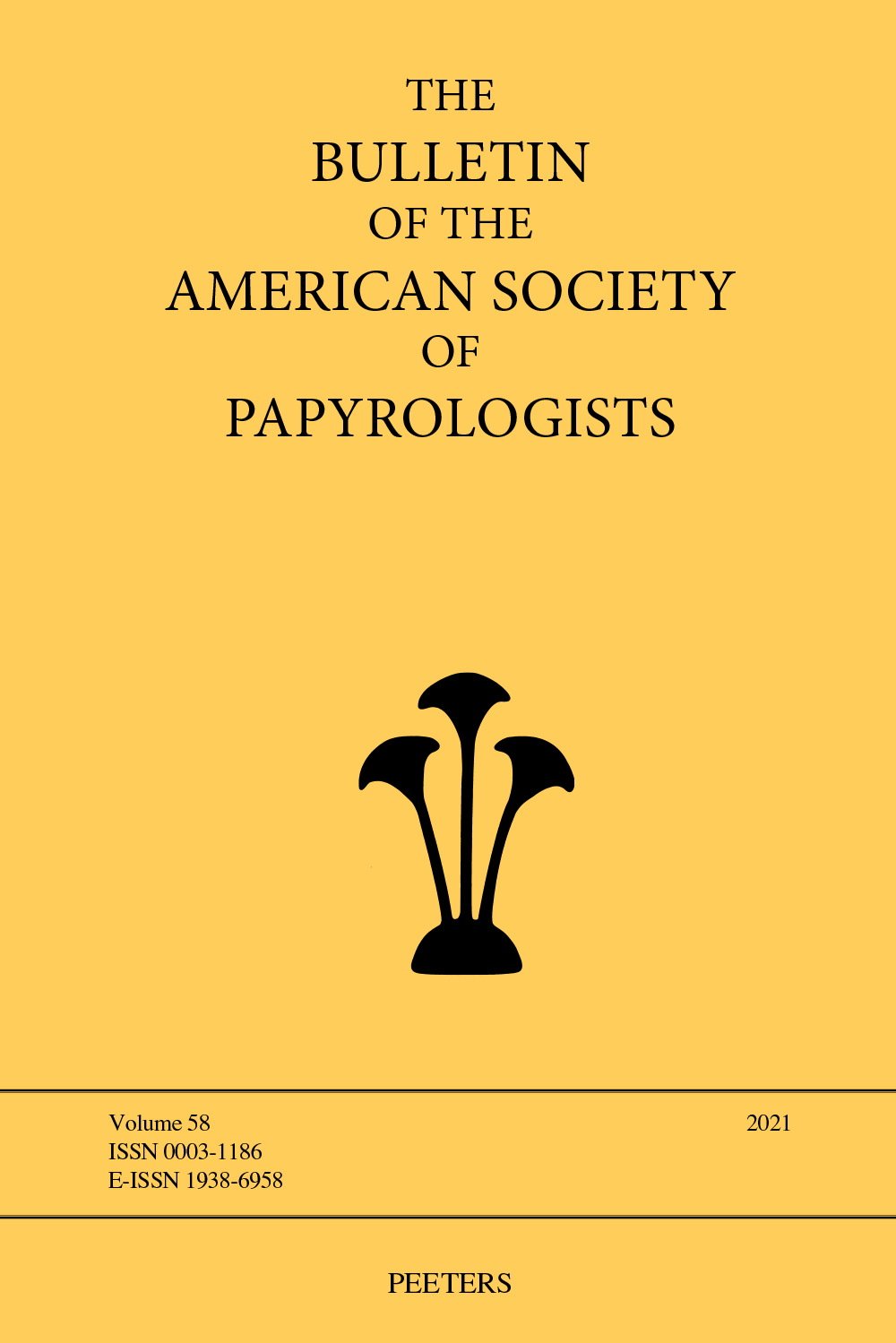 previous article in this issue previous article in this issue | next article in this issue  |

Preview first page |
Document Details : Title: Tra Archimede e Descartes Subtitle: Le 24 potenze di P.Vindob. G 27574 Author(s): MORELLI, Federico Journal: Bulletin of the American Society of Papyrologists Volume: 58 Date: 2021 Pages: 33-52 DOI: 10.2143/BASP.58.0.3289945 Abstract : This seventh- (or eighth-) century papyrus lists a series of powers of 2, up to the 24th power. The exponential growth of the results, from 2 to 16,777,216, is accompanied by numerical exponents – from the 12th power on noted as ordinal numbers –, which anticipate the modern notation system of powers adopted by Descartes in 1637. I briefly outline the history of the use, and above all of the notation, of powers from antiquity to modern times: something similar to our text can be found for the first time in Michael Stifel’s Arithmetica integra, from 1544. The papyrus is part of a different tradition from the one better known and for a long time prevalent, which is based on geometric concepts such as square, cube, square of the square, etc. It is a parallel and underground tradition, based on purely numerical concepts that has left very few traces in the sources. |
 |


